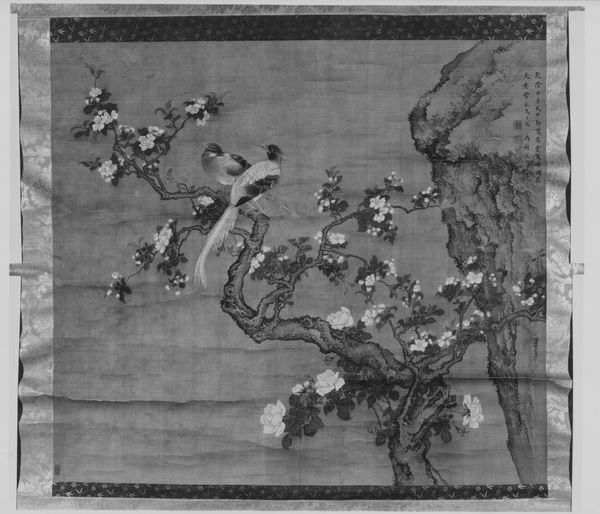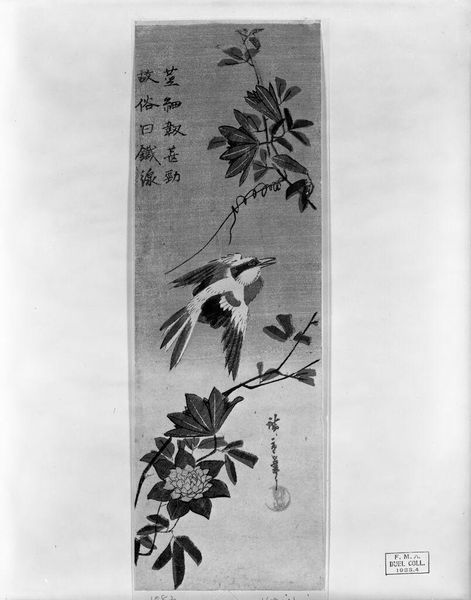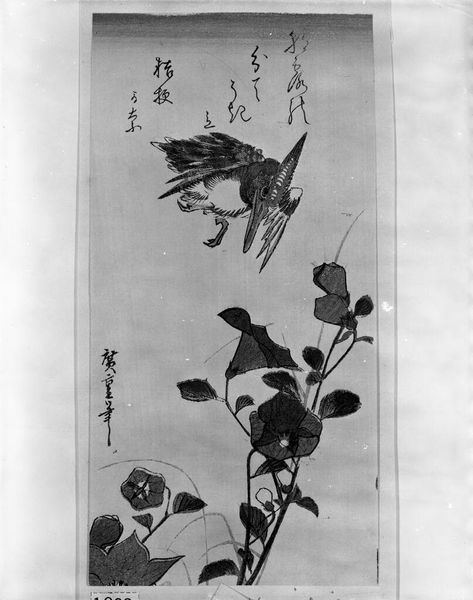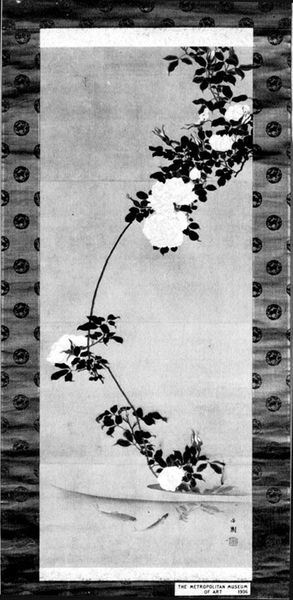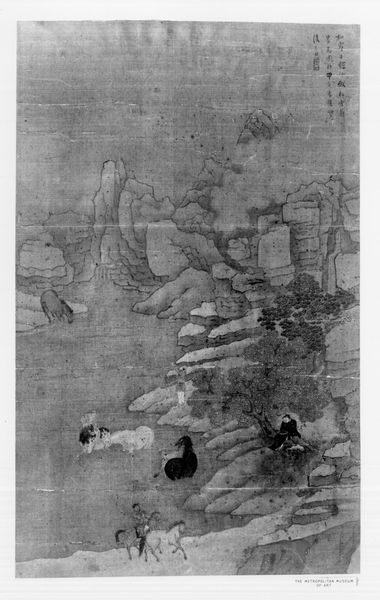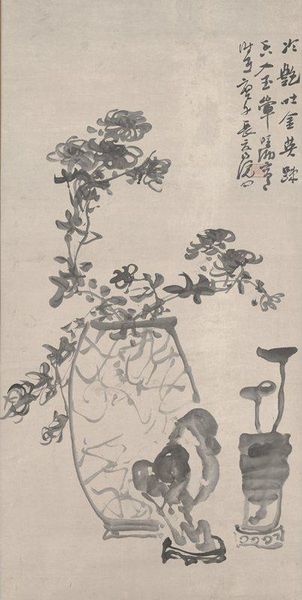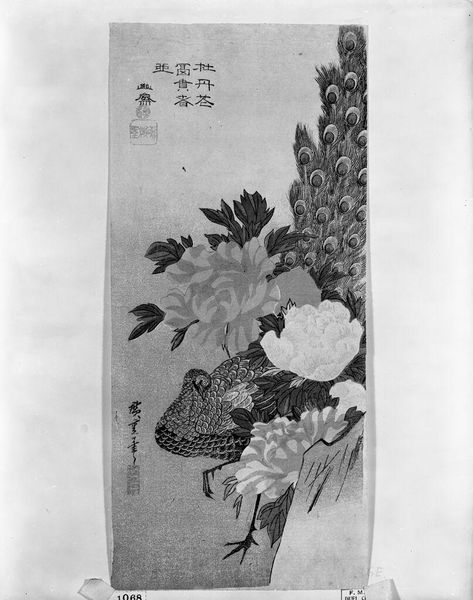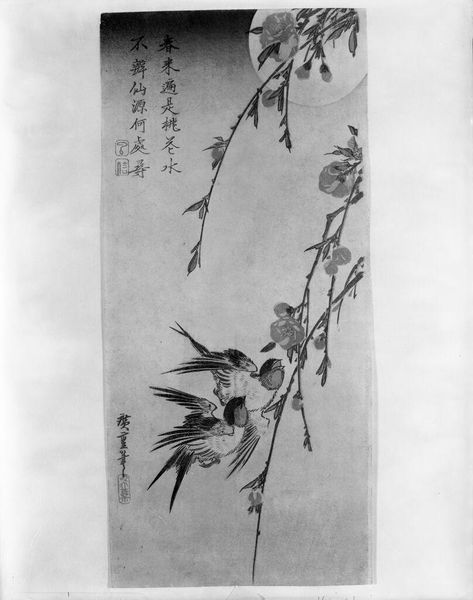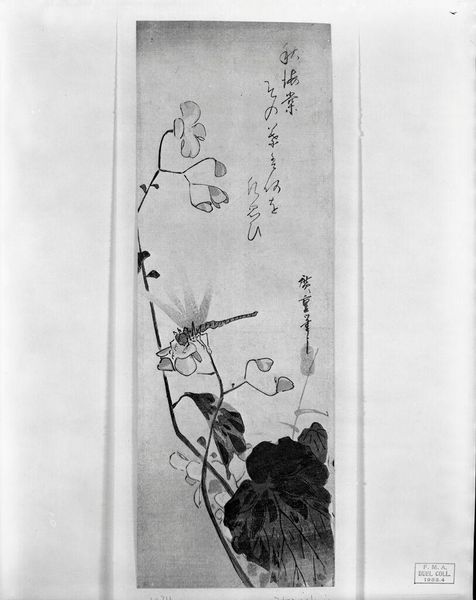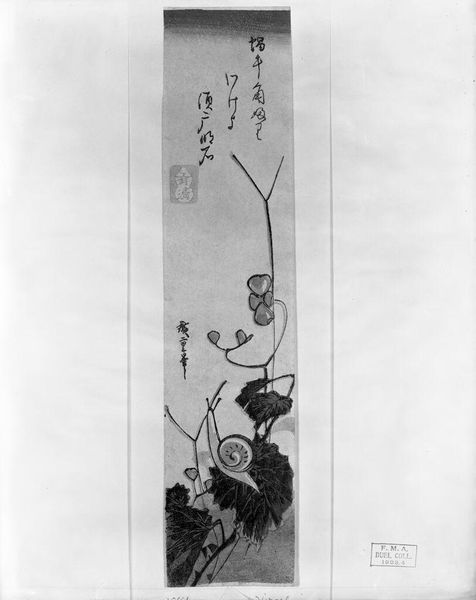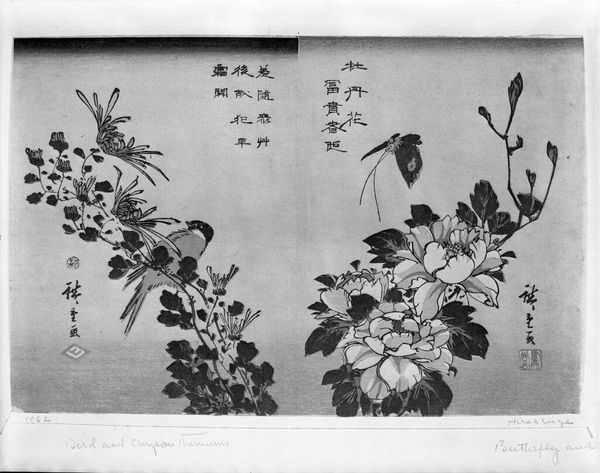
drawing, print, etching, ink, woodcut
#
drawing
# print
#
etching
#
carving
#
asian-art
#
landscape
#
etching
#
form
#
ink
#
linocut print
#
woodcut
#
orientalism
#
line
#
calligraphy
Dimensions: Overall: 36 1/2 × 22 7/8 in. (92.7 × 58.1 cm)
Copyright: Public Domain
Curator: At first glance, I see such strong, vertical lines with softer, rounded edges that create the suggestion of calligraphy or asemic writing on a printed scroll. The composition yields an immediate impression of serenity. Editor: That’s right. The piece, called "Vertical scroll," dates back to sometime between 1600 and 1633. It’s an anonymous work rendered in ink on paper, incorporating etching, woodcut, and linocut print techniques. I'm most struck by how this work grapples with social constructs of identity—and the piece certainly reflects orientalism. Can art ever truly capture the complexity of the other without also reinforcing existing power structures and prejudices? Curator: While I understand that the "orientalist" label casts shadows on the reception and interpretation of this work, let’s remember its formal aspects as well: note the considered application of ink wash, its control, and how this control yields an asymmetrical yet harmonic structure. There's tension between the clear and opaque that seems intentional and considered. Editor: And how does this "control" relate to the societal constraints imposed upon the very communities being represented? Are the delicate details of the blossoms—and, dare I say, birds—merely aesthetic choices, or are they reflections of the societal pressures to perform a certain version of femininity that was expected during the era, further informed by power dynamics? Curator: Those are significant questions! But if we turn our attention back to its materiality and surface texture, notice how the aging of the paper lends an element of gravitas that would have otherwise gone unnoticed if the work was viewed in its initial, pristine state. How might that wear add new meaning and depth? Editor: That’s the question. But in a way, perhaps the answer is less about "new meaning" and more about confronting historical biases—in tandem with challenging how gendered roles and other intersectional cultural values permeate artistic expressions themselves. Curator: True, true... a perpetual dialogue indeed! Editor: And ultimately it urges us to interrogate how our biases influence our viewing today.
Comments
No comments
Be the first to comment and join the conversation on the ultimate creative platform.
